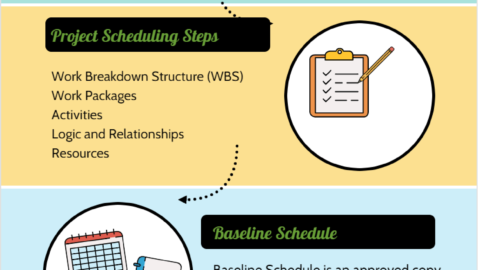Managing A Remote Team? 6 Project Management Tips To Support Efficiency
Does your company need to transition to remote working? As a business owner, are you worried about achieving your company goals with a remote workplace? Well, you shouldn’t. There are various project management tips that this article to manage a remote team that we will discuss, which you can adopt for efficiency.
Table of Contents
Consider doing the following:,
1. Provide Resources
For the efficient remote working of your team, you need to provide them with resources that’ll enable them to execute their responsibilities efficiently and promptly. You need to provide your team with laptops. Even if some of the members might be owning personal computers, still give them computers for purely work-related use. By doing this, you’re sure that you’ve given them efficiently working laptops, avoiding excuses based on malfunctioning equipment.
Remote working requires you to re-invent your IT techniques, especially security, since your team will mostly get work done online. Consider outsourcing your IT services for maximum efficiency. The outsourced team will train your workers on using the newly implemented technology to avoid errors in their works. There’s a range of services an IT provider will offer your business. A company like NENS offers Boston IT support services. If any of your members encounter an issue with their systems, they can reach out to the provider for assistance.
2. Set Performance Standards
As a company owner, you might worry that managing a remote team won’t yield the same results as when working in the office physically. However, this shouldn’t worry you.
To ensure performance, develop standards that’ll govern how your team works remotely. This can be the minimum number of hours they should work in a day to get value for your money or the minimal number of clients they have to serve in a day. By having such guidelines, your team will have to be productive to meet the set benchmarks, improving their performance and increasing your returns.
Performance standards also allow for accountability where you can call out an underperforming worker and take appropriate action. It’d also help to outline the consequences of the set standards not being met based on this.
3. Invest In Productivity Tools for Managing A Remote Team
With remote working, you can’t monitor all your team’s activities like an office setup. You need to adopt productivity tools to help you with the monitoring and ensure they meet the set performance standards.
There are time tracking tools that’ll monitor your team’s activities as they work, including their rate of executing tasks. Some will count the number of hours worked, take screenshots of your worker’s desktops as they work, and even inform you of the sites they visited during working hours. By doing this, you can identify the causes of unproductivity and raise them with your team during meetings. You’ll also gain insight into allocating tasks based on a member’s working speed to ensure timely completion.
Consider incorporating project management tools as well. They’ll help you manage tasks, even as your team works remotely. Besides allocating work to each of your workers, they’ll send alerts on any approaching deadlines or meetings. This ensures your team doesn’t fall back in completing their allocated tasks, delaying the whole project. Monday is the best tool to help with project management. Project management tools like Monday also allow document sharing among your workers to keep them on the same page regarding a project. No one won’t be updated on any progress.
4. Establish Communication Protocol
Communication is a key aspect of ensuring effective remote working since your team isn’t meeting physically. Adopt several communication platforms to serve different purposes. Have tools for sending urgent messages, for virtual and informal meetings such as those offering video calls, and other uses. With such an organization, there’ll be an efficient flow of information.
Consider laying down some rules where all members are to be available at a given time. If some are in different time zones, try finding common hours where they’ll also be available. For instance, to ensure that all members read important announcements, they are to each react to the message.
5. Allow For Flexibility When Managing A Remote Team
Some members might find it challenging to maintain the usual nine to five schedules when working remotely. This is because of other responsibilities they might have.
Therefore, allow them to work when they’re free and most productive as long as they meet the set standards and deadlines. By doing this, their performance levels will be high, not forgetting the quality of their submitted work.
6. Allow For Socialization
Remote work brings with it much boredom due to minimal social interactions. You can’t compare to an office setup where workers can leave their desks during breaks and go for a chat with other workers.
Every once in a while, organize informal virtual meetings where members share about their lives, new hobbies, and current movies. You could also engage in virtual games such as escape rooms. By having such breaks from work, your team’s cohesion is improved, they’ll re-energize, and they’ll feel that they belong to a community.
Conclusion
As seen, managing a remote team isn’t as challenging as previously thought. All you need to do is ensure your team has the resources to easily execute assigned tasks. Another thing to note is that you should adopt technologies that your staff can easily manipulate. These tools should make their work experience easier, not harder, for maximum efficiency.

Valencina has more than 25 years of experience as an IT consultant with a great focus on enterprise application UI/UX. She has experience working across multiple industries, acting both in an advisory role, as well as hands on in the technical build of solutions. Valencina is the co-founder and COO of Nitera Training Services.











